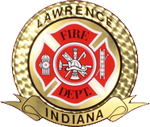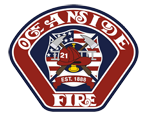 One of Mark Fleming’s first initiatives after being promoted last year to Division Chief of EMS for the City of Lawrence Fire Department was finding a solution for the organizations recordkeeping challenges. The department had already signed up with TargetSolutions in 2009, but was not yet capitalizing on all of the platforms capabilities.
One of Mark Fleming’s first initiatives after being promoted last year to Division Chief of EMS for the City of Lawrence Fire Department was finding a solution for the organizations recordkeeping challenges. The department had already signed up with TargetSolutions in 2009, but was not yet capitalizing on all of the platforms capabilities.
Fleming quickly changed that.
“We already had a membership with TargetSafety (now called TargetSolutions) at the time,” Fleming said recently during an interview to discuss the powerful online training and records management system. “The more I learned about it, the more I saw it could do. I learned there was a whole lot more we could use it for.”
The platform was originally intended to keep the townships personnel in accordance with mandated training requirements while doing it in a flexible, convenient web-based format that keeps staff members in their districts serving citizens rather than attending expensive, instructor-led training sessions. But Fleming soon learned TargetSolutions was the answer to his entire list of training needs; things like recordkeeping, reporting, and disseminating critical information to personnel.
“I (now) use every single thing TargetSolutions offers,” Fleming said. “From Web Events, to Reports Manager, if we have a new directive out, we put it on TargetSolutions as a mandatory read and it gets communicated to everyone. I don’t think there’s an aspect that I haven’t used. I’m a huge fan.
Simplifying his department’s recordkeeping practices was the biggie for Fleming. When he needs to pull a report to see how many hours his personnel have in EMS training, or some other topic, it’s all at his fingertips.
It saves me a lot of time, said Fleming, whose department serves approximately 46,000 citizens with 118 firefighters on the TargetSolutions system.
Fleming and the Lawrence FDs fire chief Dave Batalis recently participated in an in-depth interview on how TargetSolutions online training and records management system is benefiting their organization. Here are the transcripts of their comments:
Mark Fleming, Division Chief of EMS, City of Lawrence Fire Department
Question: How is TargetSolutions different from other systems you’ve considered?
Fleming: They really paid a lot of attention to us as far as customer service, by showing us new products and helping expand on the products we already have. The representatives really went all-out to explain all the ways we could use the system. And while were using the system, we can call them up and there’s usually someone there to answer questions. If they need to get back to me, it’s same day.
Question: How has TargetSolutions helped your business?
Fleming: Recordkeeping is the biggie. I’m kind of a stickler when it comes to records. It makes it so much easier for me to pull a report and see exactly how many hours they have in EMS training or exactly how many hours they have in Special Ops training. It saves me a lot of time.
Question: What application inside the platform has been most beneficial to your department?
Fleming: The recordkeeping and the Web Events. The Web Events was a new part when I took over; it allows us to do in-house training for example. I can sit at the training academy and host a class, and say it snowed and there is 2 feet of snow on the ground, the guys can sit and watch the training at their firehouses. It saves us time, saves us money for vehicles moving back and forth across the city. There are a lot of features there that have helped us.
Question: How effective is the auditing process for completed training?
Fleming: That’s one of the best features of (the platform). I can pull a report and verify that they have done the training. We require the officers to do the entries and once the officer does the entry, I know it’s on TargetSolutions. The training is complete and has been verified by a supervisor and that actually helps me in my recordkeeping, as far as auditing my version. If the state were to come in, they could pull my records and see that (our personnel) have done all the required trainings.
Question: Are there any major accomplishments that you can attribute to TargetSolutions?
Fleming: Just improvements in training. I know we’ve saved the city a ton of money in gas and maintenance, things like that. TargetSolutions is the best decision I’ve ever made. They’ve gone a long way to assist the department and to assist me with my job. Overall, I’m totally satisfied with TargetSolutions. Our representative really helped me to expand the services that we use to help me with my recordkeeping. It takes me five minutes to verify training for somebody, where before it could take hours. If it’s on our TargetSolutions system, we’re good.
Dino Batalis, Fire Chief, City of Lawrence Fire Department
Question: How has Target Solutions benefited your department?
Batalis: TargetSolutions has been very popular around this fire department. It serves a lot of purposes. It’s easy access for firefighters. We’ve been able to access training and leave equipment in their firehouses to protect the districts. This is especially important for EMS runs, for fire runs. Instead of bringing everyone to a central location, we’re able to leave firefighters and ambulances in their respective locations and watch the telecast live (through Web Events). It’s also about getting the training or message out to the whole shift and keeping the apparatus to better serve the citizens.
Question: How has TargetSolutions impacted your bottom line?
Batalis: I don’t have the exact figures, but there have been cost savings with the fuel, going to and from trainings. I don’t think you can put a value on quick response, if these vehicles are able to stay in their districts; the response time is much quicker than having to travel from a central location. Cost savings, definitely, but time, effort, support, things that we can’t put a number on, all the way to quicker response time to the people we serve.
Question: Do you use the entire platform now to its full potential?
Batalis: We use pretty much everything TargetSolutions puts out there. The great tool for supervisors is that it notifies us when assignments aren’t done. It also allows us to send out directives firefighters are given a certain amount of time to get them back in, if they are not, supervisors are notified, so it’s a good tracking method on who has done what. I use it every day and it makes the day-to-day business much more fluid.
Question: What application is your department benefiting from the most and why?
Batalis: The training. It fits our needs as far as the time element. If the firefighters are in the middle of training and they need to make a run, they can stop it and go back to it. I like the ability to start and stop. Once they complete their training with TargetSolutions, their chief, EMS or fire chief, immediately transfers that into their personnel file. It’s a very modern way of keeping track of the training they’ve had, what they’ve completed and what they still need to do and how long it takes them to do it.
Question: What would you say about your overall experience with TargetSolutions?
Batalis: Fantastic. It’s made our jobs much easier. One of the hardest things is to go back and follow is a paper trail. This makes it easy to go back, check certifications, past training, what they’ve completed. It even has come in handy for discipline, now we’ve got a record of a person not completing assignments. It’s all recorded. It’s good documentation.
About TargetSolutions
TargetSolutions is the leading provider of web-based technology solutions for fire and EMS departments. These solutions enable departments to maintain compliance, reduce losses, deliver curriculum, and track all station-level tasks, certifications and training activities.


 Stuart Sprung thought he would be a firefighter forever. After working as a firefighter for 17 years for the San Francisco Fire Department, his career came to a sudden conclusion when he suffered a spinal cord injury in a work-related accident.
Stuart Sprung thought he would be a firefighter forever. After working as a firefighter for 17 years for the San Francisco Fire Department, his career came to a sudden conclusion when he suffered a spinal cord injury in a work-related accident. One of Mark Fleming’s first initiatives after being promoted last year to Division Chief of EMS for the City of
One of Mark Fleming’s first initiatives after being promoted last year to Division Chief of EMS for the City of